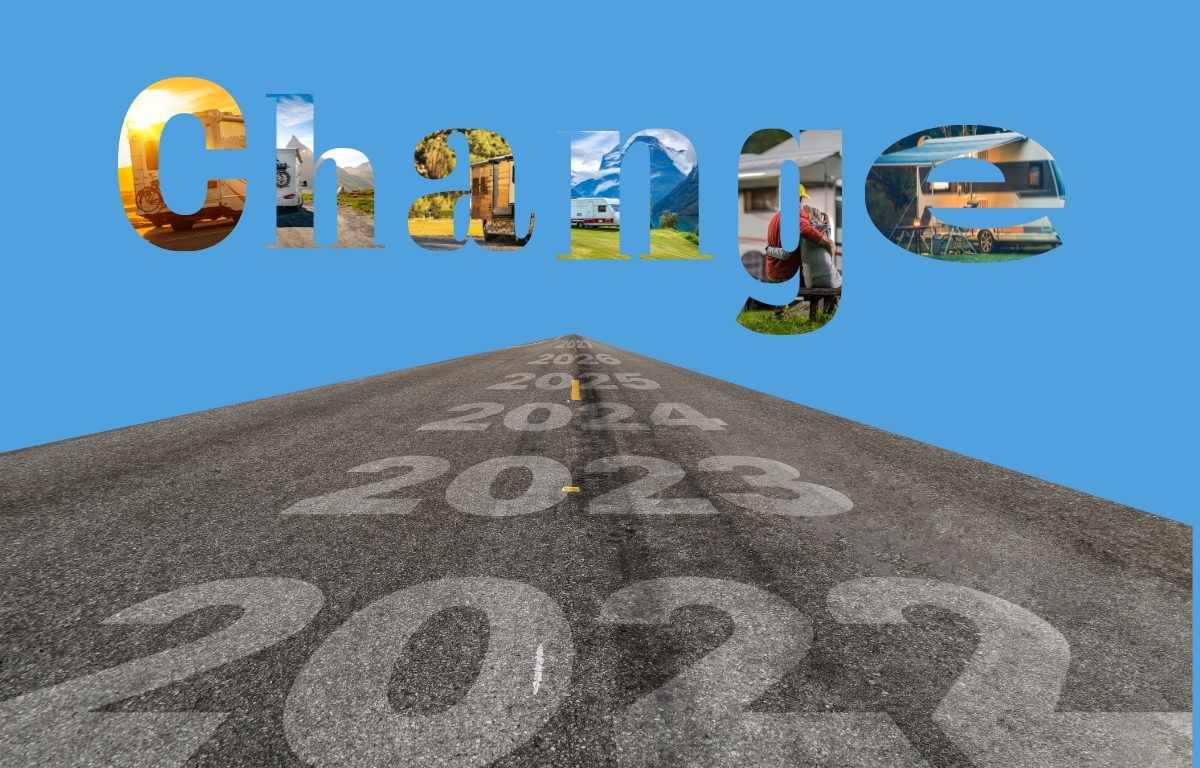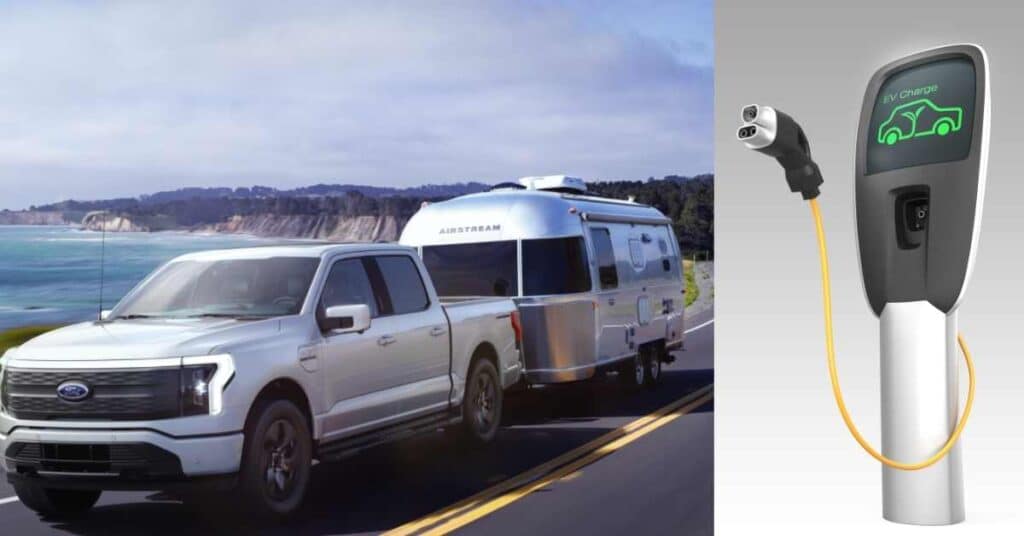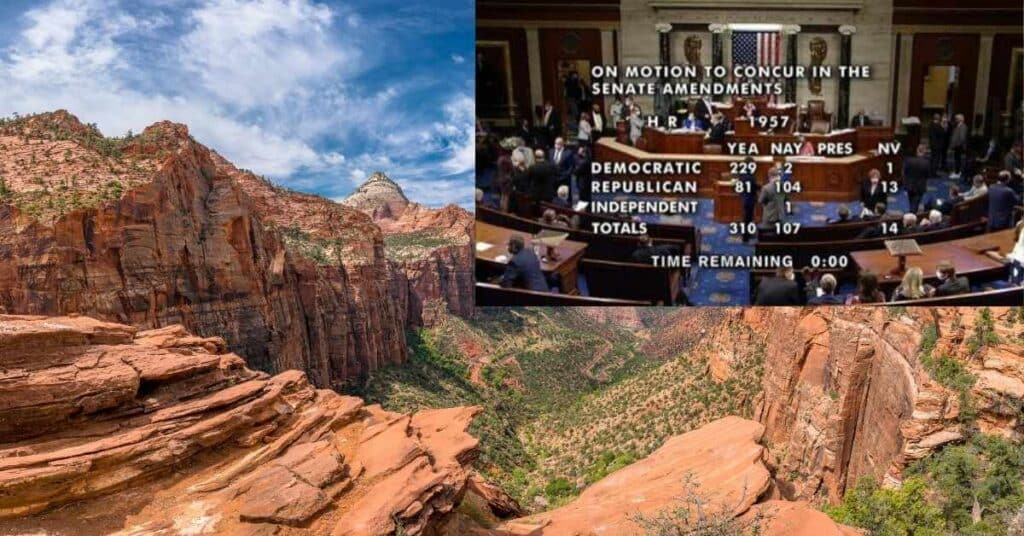Before 2020, the RV and camping industries saw steady growth, but the pace of change for the average RV owner wasn’t too noticeable. Sure, new campers were joining the lifestyle, but they weren’t quickly outpacing people retiring from it. You could even make a campground reservation without much notice for many locations. Purchasing a new RV was relatively quick as demand was low and inventory was stable. It was a good market for a buyer.

If the past two years have taught us anything, it’s that life as we know it can change in an instant. The word “normal” is no longer part of our vocabulary. In fact, even using the term “new normal” feels mildly uneasy with so much uncertainty looming over the future. It would be nice if the clock change at midnight on January 1st could serve as a reset button. However, we know that it won’t.
For many of us, camping is an escape from the stress of life. In times like this, where everyday life stresses get replaced with looming threats of new Covid variants, inflation, and supply chain disruptions, this escape is even more necessary. However, recent RV and camping lifestyle changes have made this escape more challenging to access.
The RV and camping industries have experienced unsurpassed pressure on them over the past two years. Dealer inventories are more than 40% below “normal.” As a result, the major manufacturers have billions of dollars in backorders, and wait times for new RVs are unprecedented, with some people waiting over a year to take ownership.
Between 2020 and 2021, more than 1 million new RV owners entered the lifestyle. As a result, once relatively easy to make just a few short years ago, reservations are increasingly harder to find. Some campers are even booking reservations a year out for popular campgrounds, and paying higher prices. Similarly, demand has pushed RV prices to record highs.
For veterans of the RV lifestyle, this is unwelcomed news. I have heard on many occasions individuals wishing that things could go back to the way it once was. But, unfortunately, the one oasis that many folks could rely on to escape from the stresses of life is now a source of new stress. This change can be scary, but there is hope. We must look beyond the fog of uncertainty and see the forest through the trees. There are many things to look forward to in the future.
A Reason for Hope
Some life changes occur slowly over time, often without most people noticing them. Others happen quickly. The changes that Covid brought to our world are significant and happened suddenly. It’s easy to draw a line in our recent life timelines as either pre-covid or post-covid. A few short days in March 2020 changed so much, so quickly.
This change is comparable to a natural disaster or a sudden life upending event like September 11, 2001. With these types of events, change occurs rapidly, and rebuilding occurs slowly. It’s difficult, but if history teaches us anything, it’s that we will rebuild and recover. When you’re in the midst of that rebuilding process, it’s hard to see the light at the end of the tunnel. However, we don’t need to look to the future for hope. Instead, we can look at the process of rebuilding for it. If we trust in that process, just as history has proven before, we can look forward to a time where things are better.
I believe that there are very bright days ahead for the RV community. While things may never be as they once were, very few things in life are. Things will change, but there is reason to hope that it will bring many new positives to the RV community.
Below are a few things that we can look forward to in the future.
RV manufacturing
The RV industry is stronger now than it has ever been before. In 2021, RV manufacturers will likely have shipped a record-breaking 600,000+ units. Predictions for 2022 expect more than 630,000 units shipped. The industry achieved this when resources were at an all-time low, a condition that throttled other industries. The RV manufacturers managed to do this through the pandemic, overcoming shutdowns, worker shortages, and changes to the workplace environment. While the industry has billions in backorders, they also have a solid and profitable financial forecast and reasons to invest in their future.
The profitability of the RV industry will not go unnoticed by new investors and entrepreneurs. In the coming years, I predict that we will see new RV manufacture startups offering advancements in RV technologies and construction, providing better built and more capable RVs. This change will likely pressure the existing manufacturers to improve product reliability, add new features, and focus more on customer satisfaction.
Strength in the RV manufacturing industry is good for the RV lifestyle. Aside from signaling investments in the products we use and love, it catalyzes the ancillary RV industries to invest and innovate. This change will be visible with traditional industry partners like equipment and accessory manufacturers, campgrounds, tow vehicle manufacturers, and service providers like wireless internet carriers.
New technologies: better connectivity
As new campers enter the market, they’ll bring with them their lifestyle needs. Internet connectivity has long been a struggle for the RV community. While some individuals are happy to disconnect when camping, it’s clear that the majority want that option. In a recent survey of RV owners’ internet needs, more than 80% of responses indicated that reliable internet access is essential.

New services, such as Elon Musk’s Starlink satellite internet service, will likely fill some of this need, but the vast majority of campers may seek out simpler options. The wireless cellular industry has been painstakingly slow to respond to this demand, often creating hurdles like speed throttling and high prices to maintain control. The market is ripe for a disrupter. I believe that the growth in the RV lifestyle will push traditional internet providers to change course and meet the market’s demand. For those of you old enough to remember the early years of the cellular industry, consumers managed under restrictive geography rules, few minutes, and text message fees/limits. As the consumer demands changed, so did the industry. I believe we’ll soon see that here in the RV market.
Tow vehicle advancement
Last year’s announcement of the new Ford F150 Lightning and the recent addition of Rivian to the truck manufacturer lineup, we’re beginning to see changes to the traditional truck market that we rely on as the RV community. Electric drivetrain tow vehicles are in their infancy, but in the years to come, I do think we’ll see reliable options for towing even some of the larger RVs. In order to accomplish this, technology will need to advance for manufactures to find the sweet spot of weight, range, and power. However, nothing spurs innovation like a demand. Coupled with RV manufacturing trends and creating lighter rigs, the electric truck market will get there. We also need infrastructure upgrades to make charging possible when towing. Currently, most charging stations wouldn’t be able to accommodate a trailer. Adopting fast charging technology (15 minutes or less for a substantial charge) and reliable ranges will allow RV owners to consider going electric.

Some of the benefits of a fully electric truck may offset the negatives. I can envision a completely redefined boondocking experience. Suppose a truck can retain 100 miles of driving distance and allocate the rest of the battery charge to the RV. Generators can be a thing of the past, and campers can enjoy days of quiet, off-grid camping. I don’t think this reality will be all too far into the future.
Aside from electric vehicles, we’re also seeing advancements allowing more towing out of traditionally smaller engines. For example, the Ford Eco-Boost gas engine has provided strong competition to the diesel engine. Economy driving features in many trucks are already lowering fuel expenses. An eight-cylinder truck can now function like a four-cylinder SUV in some situations when unhitched. While we can’t attribute these advancements solely to the RV lifestyle, the demand for reliable tow vehicles from RVers only helps to encourage continued investments in the truck market.
More camping options
Perhaps one of the most stressful changes for the RV community is the overcrowding of campgrounds and the difficulty of making reservations. Just a few years ago, this wasn’t much of a concern. In 2020, national reservations climbed by 1,323,031 to 3,267,142. This change is a 68% increase from the previous year. The numbers for 2021 will likely look similar. One of the challenges with the recent changes in the RV and camping industry is the inability of market elements to keep pace with each other. New RV owners have entered the market quickly. According to a report by Kampground of America, more than 10 million households camped for the first time in 2020. That’s an astonishing figure. While not all of them were RV campers, the trend is real.
The challenge isn’t so much the number of campers but more of the market’s ability to respond to the demand. Market changes, such as the astronomical increase in RV sales, can happen quickly. Unfortunately, the needed infrastructure to accommodate them couldn’t grow simultaneously. That created a situation like we’re experiencing now. Increasing the campground space throughout the country will take many years. However, the good news is that it’s happening. If you do a google news search for “campground expansion,” you will see dozens of recent articles of examples of this happening. Constructing a new full-hookup campground site is expensive, costing on average nearly $50,000/site. Before the recent surge in demand, the financial incentive wasn’t there for large-scale campground development. This condition has changed.

Not only are private campgrounds adding new sites, but federal and state campgrounds are also as well. In 2020, congress passed the bipartisan Great American Outdoors Act (GAOA), which was signed into law by President Trump. The GAOA will direct $9.5 billion of nontaxpayer funds to address infrastructure needs within the National Park Service, U.S. Forest Service, Bureau of Land Management, and other federal agencies over five years. This investment is a great start, providing enough funding to address about half of the outstanding infrastructure and maintenance needs on National recreational lands. Many of these needs are at federal campgrounds. In addition, investing in national parks is a wise economic decision. For every dollar invested in our national parks, $10 is returned to the U.S. economy. That’s a wise investment.
In addition to the traditional campground, more unique and niche camping options will also emerge. Programs such as Harvest Host are defining new ways to meet the camping demand. Through Harvest Host, members can camp for free at hundreds of participating private locations such as farms, wineries, breweries, and other commercial businesses. Hosts benefit from this offering by attracting people to their business. Sites like Airbnb are also offering privately hosted camping locations. Over time, this will only increase, and options will emerge to take some pressure off traditional campgrounds.
The recent investments in camping accommodations will take some time to meet the current demand, but when it does, campers will have new and more diverse options to choose from. It’s also important to know that we’re experiencing the rise to the peak of demand right now. In time, this will level out, and we’ll see the actual market demand. Traditional travel, which was stunted by the pandemic, will also return to normal levels. When that transition happens, we should see availability increase and have a much less stressful reservation process. As a result, we’ll hopefully have a net increase in camping options.
Back to the basics
I’ll leave you with one final thought, which isn’t about RVs, campgrounds, trucks, or technology. I am hopeful that a positive result of the surge in camping interest will do for others what it does for me, and I suspect many of you. Camping takes us from our fast-paced lives and forces us to slow down a little. It reconnects us with nature in a way that a hotel room can’t. We spend more time outdoors, with family, and doing things we love. Camping allows us to meet new people and forge friendships without sending a friend request. It also helps build community, something that we desperately need right now. I can’t count the number of times a fellow camper offered help if they saw me working on something or struggling to back into a site. Camping has a unique way of bringing people from all different walks of life together.
Conclusion
There’s no question right now that the forces of supply and demand are impacting the RV and camping lifestyle. This reality is true for purchasing RVs, reserving campsites, and simply getting the tools and equipment needed to get on the road. Unfortunately, it’s easy to feel defeated by these challenges and fear that things will never be as they once were. While the structure of the RV and camping experience that we all know and love may look different, I am hopeful that the core elements that draw us to it will return to normal. The new interest driving this demand will, over time, provide many benefits to all of us. History has proven, time and again, that recovery from a challenging situation is possible. We only need to look at the ingenuity of people and the progress they’re making to meet the changing landscape as proof that we’ll get there.

In great appreciation for sharing your positive insights!
A nice positive outlook. That’s what we all need. I am retired and planning to go full-time Rving in summer of 2024. I live in MA and will travel from New England to FL slowly with the seasons. I will be doing my research this winter to prepare my knowledge and buy a Class C RV in spring / summer of 2024. I really love the Winnebago Navion/View 24 which I most probably will buy. Used, years 2016-2019. I will save over $2000 in rent each month. Apartments here in Boston area keep getting more expensive.Question: Do you think prices of RVs will trend down in the next 12 months? Thank you, Dan
Thanks for the comment and best luck with your move to Full-time. I know that sales are the lowest they’ve been in several years, so it’s a good time to try and negotiate. If you have any RV show near you, it’s a good place to get the ball rolling. I have a great article and buying an RV at an RV show. As for used, they will likely follow the new RV pricing trends, but you may see less negotiating happening for them as they’re trying to push new.
https://outdoormiles.com/how-to-score-the-best-deal-at-an-rv-show/